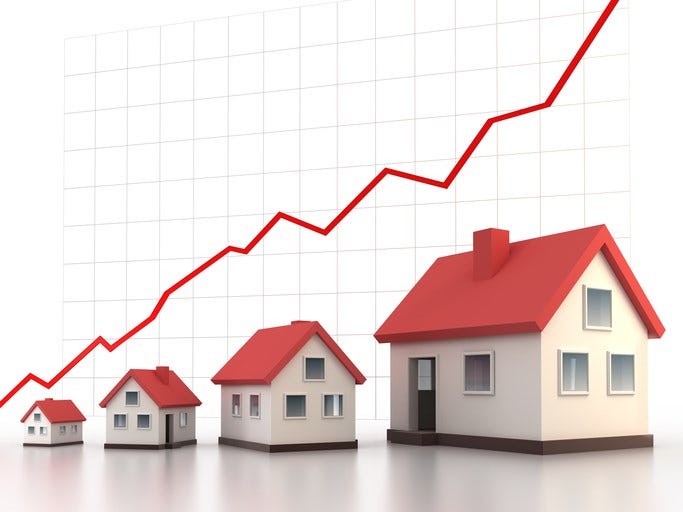Many experts (and more non-experts) are reading the tea leaves and trying to figure out the answer to the question: "Where does the real estate market from here?"
Well, the basics have not changed, it's all local and it's all about supply and demand. Econ 101: When demand exceeds supply, prices go up and vice-versa. So, it's important to know what's driving supply and demand in YOUR LOCAL MARKETS, not citywide, statewide, or certainly not nationwide.
SUPPLY
Supply is the number of houses for sale in a particular area. When I say, "for sale", I mean listed on the MLS with a real estate broker or agent. As you may have noticed, this number is way down in almost EVERY city in the U.S. right now (Nov 2021). What you are looking for is the "supply curve", which is calculated by taking the number of houses currently for sale in a geographic region (area, zip code, subdivision, etc.) and dividing it by the number of houses sold within the last 30 days. For example, if there are 12 houses for sale and 3 have sold in the last month, then you have 4 months of supply (that is, it'll take 4 months to liquidate all current inventory if nothing new comes up for sale in that area). Normally, six months of supply is a balanced market; less than six is a seller's market, more than six, well, you get the idea...
Right now, in my market (Denver metro), there is just under ONE month's supply - a VERY, VERY, VERY seller's market. Houses sell in hours, and there are MULTIPLE overbids above the asking prices. Often times, the price agreed upon is more than the house will appraise for by the buyer's lender, which means the buyer must pay the difference in CASH to get the house. This is also common in many major markets.
Builders are slapping up houses like crazy, but not enough to keep up with demand in most markets. And, since most owners of houses are 60+ right now, the chances they will move are not good. Besides, even if they get a high price, they know they will overpay for the replacement home, so they are staying put. This trend will remain the same for the foreseeable future.
INVESTOR TIP: Buy small, "starter" homes in middle class areas (3/2's, approx. 1200 sqft, etc) that have larger lots you can expand the home onto in the future. Builders are NOT making these anymore because the cost of building a subdivision is fixed and the nominal cost of 2x4's and drywall favor making bigger homes on smaller lots for builders to make a profit. Thus, the small "box" houses built between 1950 and 1980 are becoming extinct.
DEMAND
What drives demand? Well, many things:
1. Local population trends. People are moving from big cities into suburbs and rural areas en masse because of the "COVID" effect and the long-term trend of people telecommuting more. Also, people are moving out of the Northeast and going South for Florida, Texas, and the midwest/southwest where prices are cheaper, taxes are lower, and the weather is warmer. This will affect demand on a city by city and neighborhood by neighborhood basis. Know the trend, it's your friend!
2. Millennials Coming of Age. Millennials are reaching their early 30's, which is means they are getting married, having families and moving out of their rental apartments to buy homes. This trend will continue for a while, creating more demand.
3. Interest Rates are Low. Interest rates for mortgages are the LOWEST in history. I just watched a commercial advertising 2.25% for a 30-year fixed-rate loan! If interest rates rise dramatically, the buying power of a buyer drops, and this affects demand. For example, if rates doubled to 4.5% (still historically very low), a buyer's loan payment (excluding taxes and insurance) would DOUBLE! With the U.S. gov't proposing multi-trillion dollar deficits each year by printing more money, interest rates have no where to go but UP! However, 2022 being an election year, the pressure will be on the Fed to keep a lid on rates. Thus, we probably won't see the effects of deficit spending on mortgage rates until 2023.
All in all, expect 2022 to be another year of low supply, high demand, and rising prices and rents.
FINAL THOUGHT
Many buyers and investors are sitting on the sidelines waiting for a market correction to buy at lower prices. This could be the case if you wait, but if interest rates rise, are you really getting a better deal if you are buying houses to hold and rent for the long-term? For example, If you buy a rental property and borrow $300k on a 3.5%, 30-year loan you will end up paying about $485k in principal and interest payments over 30 years. If you pay $50k less for the home in the future and thus only borrow $250k, but the market interest rate is 5.5%, you will pay a total of about $511k in payments. Is that really a deal? Don't make assumptions, friend, do the math!
